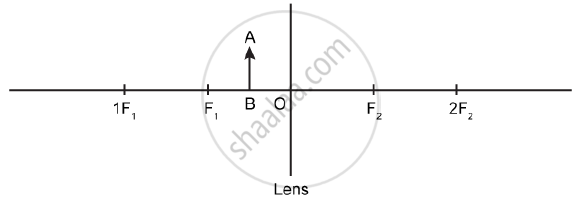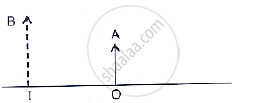Advertisements
Advertisements
Question
Differentiate convex lens and concave lens.
Solution
| Convex Lens | Concave Lens |
| 1. The lens which is thicker at the centre than at the edges. | 1. The lens is thinner at the centre than at the edges. |
| 2. Abeam of light passing through it, is converged to a point. | 2. A beam of light passing through it is diverged or spread out. |
| 3. It is called a converging lens. | 3. It is called a diverging lens. |
APPEARS IN
RELATED QUESTIONS
A student wants to project the image of a candle flame on the walls of school laboratory by using a lens:-
(a) Which type of lens should be use and why?
(b) At what distance in terms of focal length 'F' of the lens should be place the candle flame so as to get (i) a magnified, and (ii) a diminished image respectively on the wall?
(c) Draw ray diagram to show the formation of the image in each case?
An object AB is placed between O and F1 on the principal axis of a converging lens as shown in the diagram.

Copy the diagram and by using three standard rays starting from point A, obtain an image of the object AB.
Where should an object be placed in front of a convex lens so as to obtain its virtual, erect and magnified image?
A convex lens is placed in water. Its focal length will ______.
A converging lens forms the image of an object placed in front of it, beyond 2F2 of the lens. Draw a ray diagram to show the formation of the image.
The given below figure shows an object OA and its image IB formed by a lens. State three characteristics of the image.

State two applications of a convex lens.
Can one bum a piece of paper in daylight by just using a convex lens instead of a match or any direct flame? Support your answer with the help of an appropriate ray diagram.

The above image shows a thin lens with a focal length of 5m.
- What is the kind of lens shown in the above figure?
- If a real inverted image is to be formed by this lens at a distance of 7m from the optical centre, then show with calculation where should the object be placed.
- Draw a neatly labelled diagram of the image formation mentioned in (ii).
Distinguish between:
Concave lens and Convex Lens
